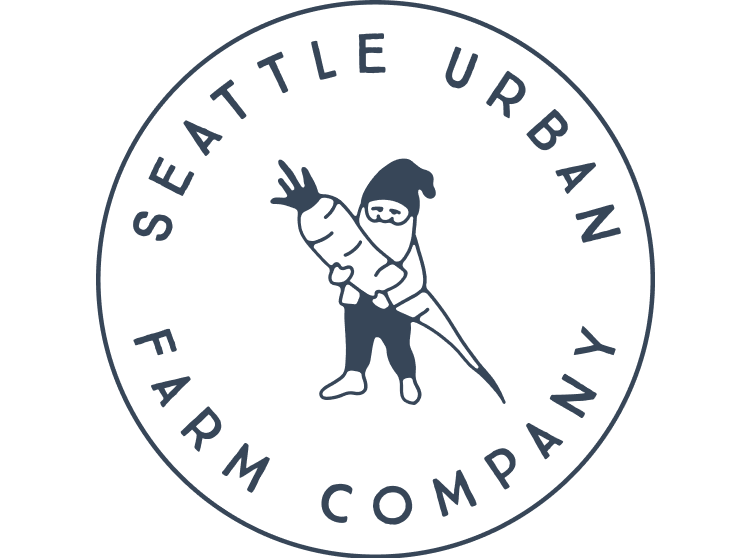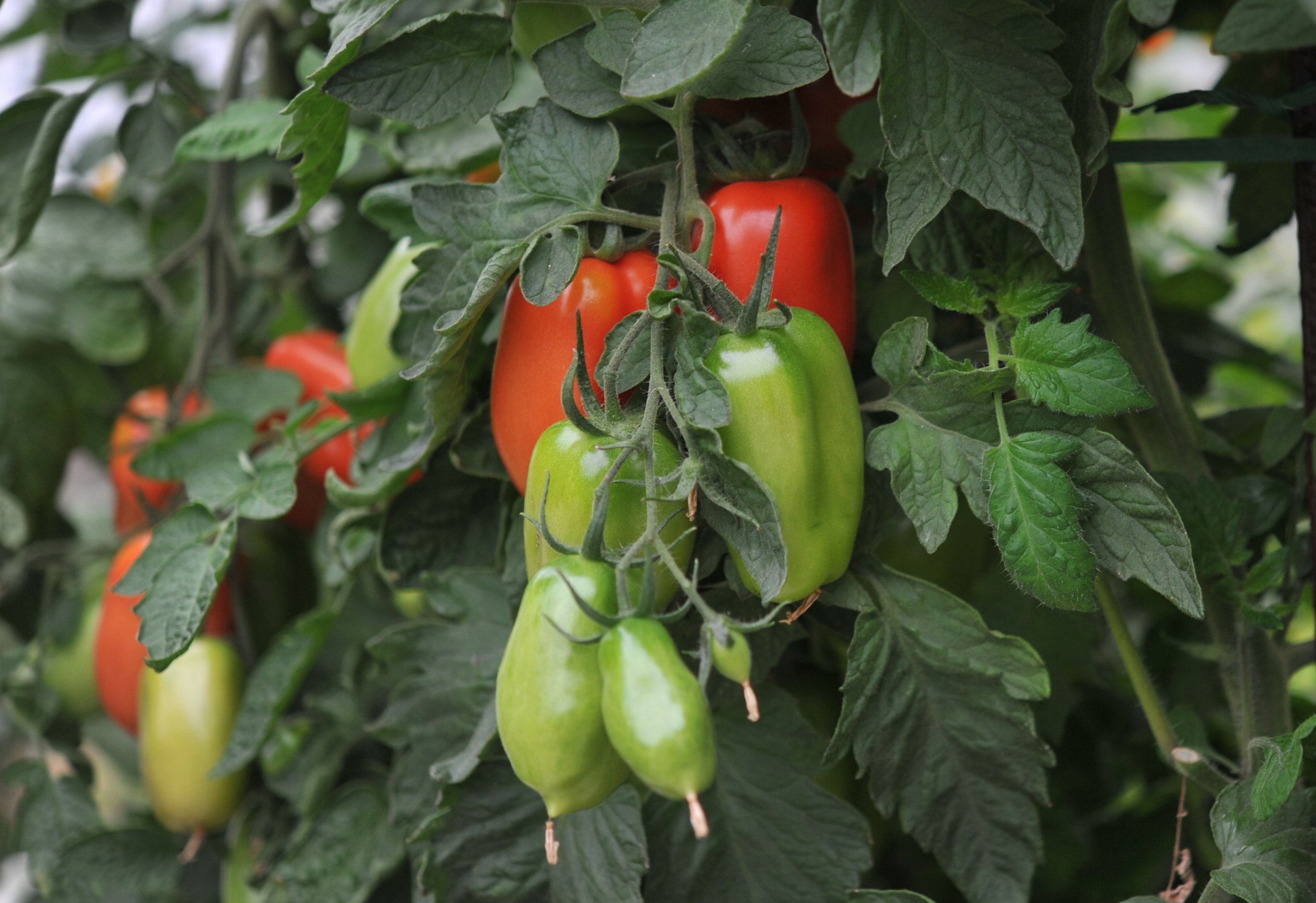There are very few vegetable gardens without tomato plants. Unless you’re allergic, it’s hard to imagine why you wouldn’t want them. A healthy tomato plant is beautiful, bountiful and provides a quality of fruit that is virtually impossible to get from a store (although possible to get from a farm stand). Regardless of the length of your tomato harvest season, it’s always a priority to extend it as much as possible.
Unlike some other crops (looking at you green beans) that you may eventually tire of before they’ve finished producing, there is always more room for fresh tomatoes. It begs the question, now that the end of the season is in sight, how do I make the most of my tomato plants?
Cutting off a late-season shoot that won’t have time to develop fruit. These indeterminate tomatoes are supported by compostable twine and clips, and hanging from a trellis.
Late-season blossom and shoot removal: tomatoes come in two general categories, determinate and indeterminate. Determinate tomatoes are shorter plants that ripen all of their fruit in a narrow window, perfect for canning and storage. Indeterminate types are the ones that outgrow your tomato cage by about four feet and try to take over the entire garden. Besides roma and other types of plum tomatoes, most tomatoes planted in the home garden fall into the indeterminate category. By definition, these plants never stop growing, at least until cold weather or blight comes calling. This means that your tall tomato plants will continue to develop new shoots through September and into October, and generally require a tall trellis to support them. These shoots will of course have blossoms, but after a certain point in the season, the blossoms won’t actually have time to develop mature fruit before the plant dies. Thus, to conserve or focus the plant’s energy into the blossoms and fruit that are viable, it’s a good idea to prune off late-season shoots from your indeterminate tomatoes. Typically, these shoots will be emerging from a leaf axis on an existing branch and will be easy to spot because they are thin, near the top of the plant and loaded with fresh flowers. The easiest thing to do is simply snap or prune them off right at the leaf axis. If you start pruning off new shoots in late September, you can help your plants develop and ripen more of the existing fruit on their stems.
Root-pruning
It’s generally believed that tomatoes will ripen fruit faster… if the plant is somewhat starved for water.
Image from Grow More Food
Root-pruning: It’s generally believed that tomatoes will ripen fruit faster, and that the fruits will taste better, if the plant is somewhat starved for water. The general idea is that this lack of water helps concentrate the good stuff inside the fruit without watering it down too much. Kinda like when you decide to add an extra packet of hot chocolate to your mug. If you notice that your plants are setting, but not ripening a lot of fruit, you can stress your plants a bit and incentivize them to finish ripening those fruits by pruning the roots. It’s an easy process, you can simply take a spade shovel and chop a circle around the base of your plant about 12-24” from the stem. It’s almost the same process as preparing a plant for transplanting, except you don’t need to finish digging all the way around and don’t need to lift it out of the ground or replant it. Just chop through the roots in a circle and call it good. The plant will still have plenty of roots to draw nutrients and water from the soil for the rest of the season.
Withhold water: A variation on the root pruning technique is to begin reducing the amount of water you give the plant each week. In hot, dry weather this technique can be a bit of a gamble, but should work well for a well-established fully mature tomato plant. Tomatoes have extensive root systems that can draw moisture from deep in the soil.
Harvest green: If you find yourself at the end of the season with a dying tomato plant still loaded with fruit (like everyone does), pick the green fruits before rot begins to set in. Green tomatoes can ripen on the counter or in a paper bag even when picked very immature from the plant. These end-of-season fruits will rarely be as good as vine-ripened ones, but they are much better than no tomatoes at all.
As the season winds down, fruiting crops may continue to flower late into the season. Indeterminate tomatoes and pole beans won’t necessarily recognize that the season is coming to an end, and will keep producing flowers in the expectation they will have time to mature into fruits with viable seeds.
Knowing your average first frost date, you can anticipate how many weeks of useful production these crops might have left and begin removing any new flower blossoms several weeks before the expected change in weather. By removing blossoms that have no hope of producing usable fruit, you can encourage the plant to ripen its existing fruits more quickly, resulting in a better quality late-season harvest.







In episode 123 of the Encyclopedia Botanica podcast, host Hilary Dahl and her husband and business partner, Colin McCrate discuss the benefits and methods of vertical and horizontal string trellising.